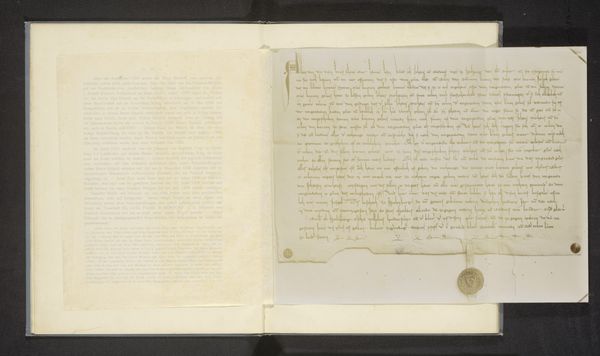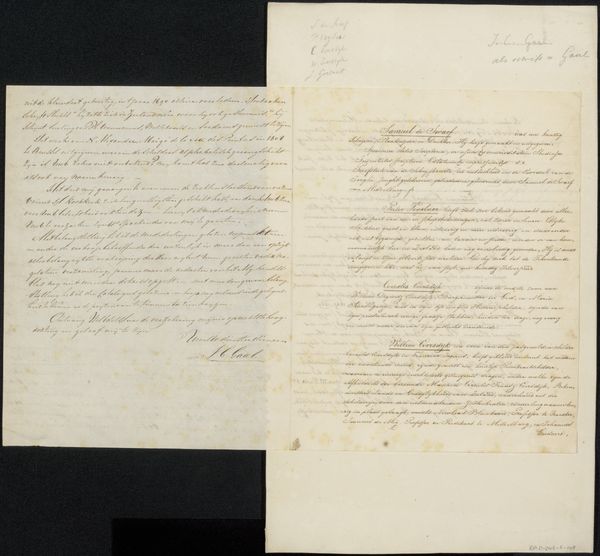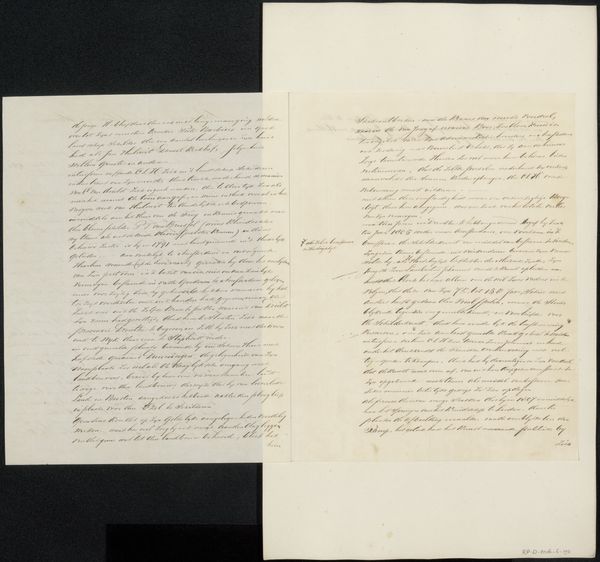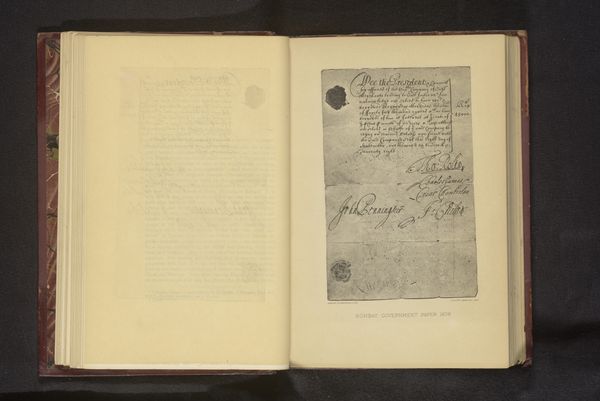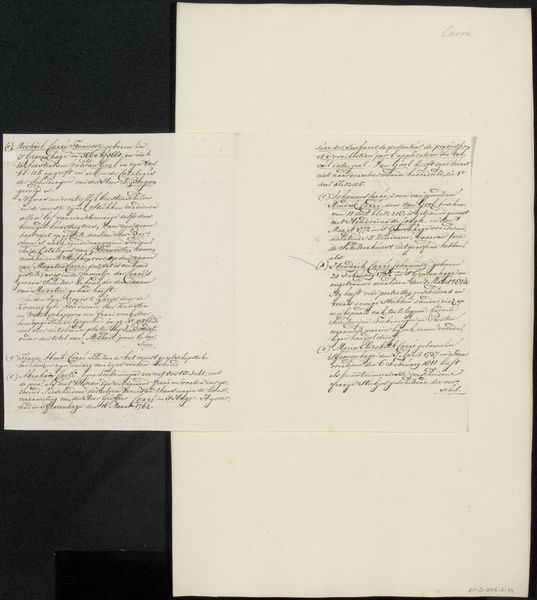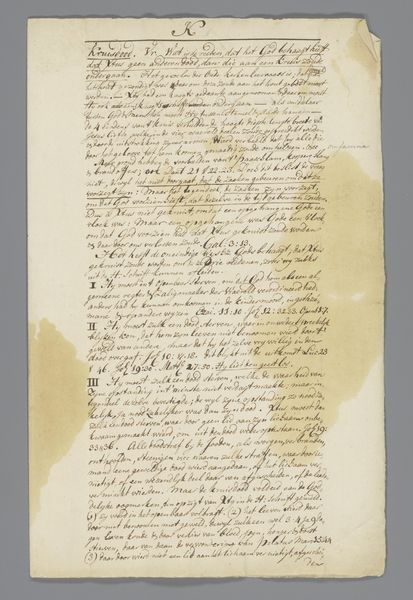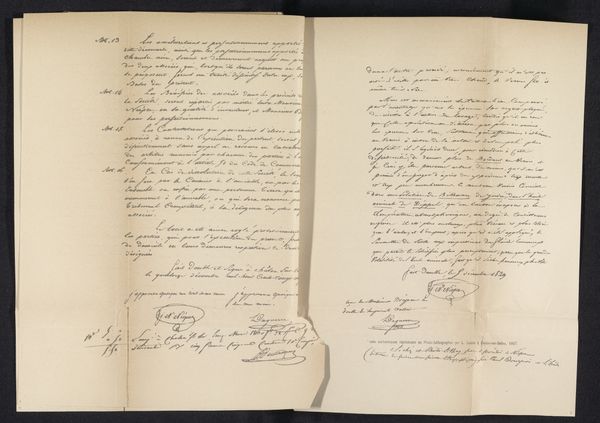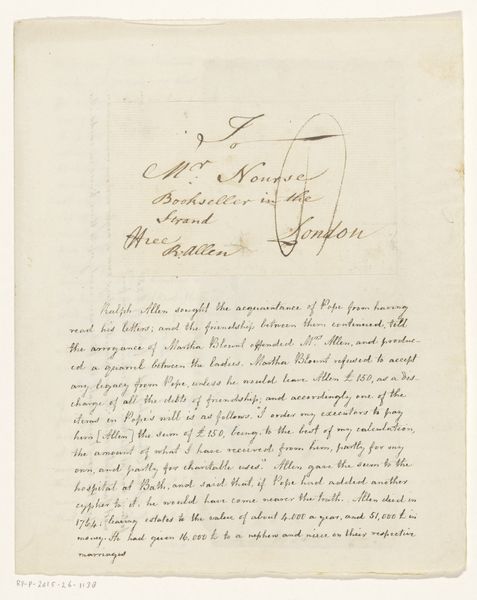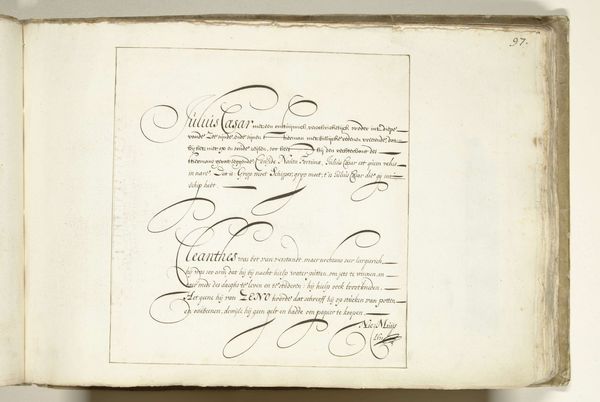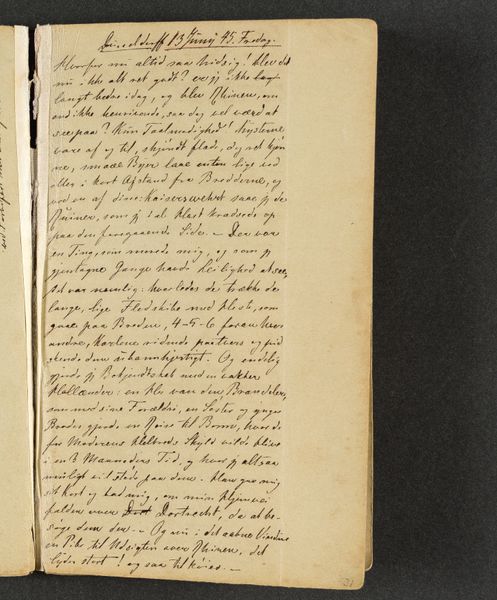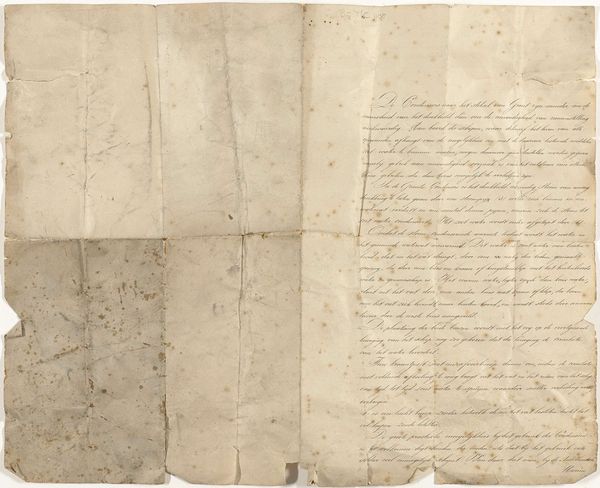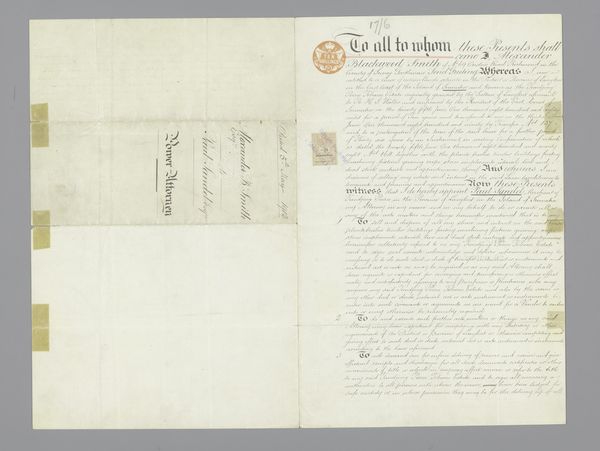
drawing, paper, ink
#
portrait
#
drawing
#
aged paper
#
homemade paper
#
typeface
#
paper texture
#
paper
#
ink
#
history-painting
#
calligraphy
Dimensions: height 235 mm, width 295 mm
Copyright: Rijks Museum: Open Domain
Curator: What strikes me immediately about this reproduction of a letter by Charles IX of France is its fragility. The thin paper, the faded ink—it all speaks to the passage of time and the delicate nature of historical documents. Editor: Indeed, there is a ghostly quality evoked through these materials. Consider that this letter originates from 1567, a tumultuous period marked by the French Wars of Religion. Charles IX was king during the St. Bartholomew's Day Massacre, an event that has had repercussions for the shaping of social identities in France ever since. Curator: The handwriting itself is fascinating. That calligraphic style was so integral to projecting power and authority. The very act of signing his name becomes a potent symbol, almost like a visual brand representing the monarchy. Editor: The letter opens "Charles by the grace of God, King of France…" which immediately situates it in that symbolic framework. The imagery here recalls medieval notions of divine right. Can we extract from it a deeper, more subliminal psychology of power? It has to also be considered against the realities of the massacre of Huguenots that he enabled as a social leader, what kind of psychological dissonance can the viewer feel upon reading this? Curator: It is a complicated perspective shift! We see what's written as well as being hyper-aware of its function. Are there recognizable symbols that we are supposed to be reminded of as we process the lettering? The image itself feels very private and delicate as though someone created this so as not to have the letter fully viewed at first glance. Editor: There’s a particularity in the shapes of letters which are so beautiful that I wish they hadn’t become associated with such violence and chaos. But the original intention may be that they project power. Curator: Viewing historical artifacts can certainly be a double-edged sword. The beautiful can also remind you of darkness. It offers insight into that tumultuous historical period while also requiring us to engage with its more problematic aspects, urging conversations about accountability in representation. Editor: Agreed. By understanding the multifaceted narratives embedded in seemingly simple objects, we can foster a richer, more nuanced relationship with history.
Comments
No comments
Be the first to comment and join the conversation on the ultimate creative platform.
